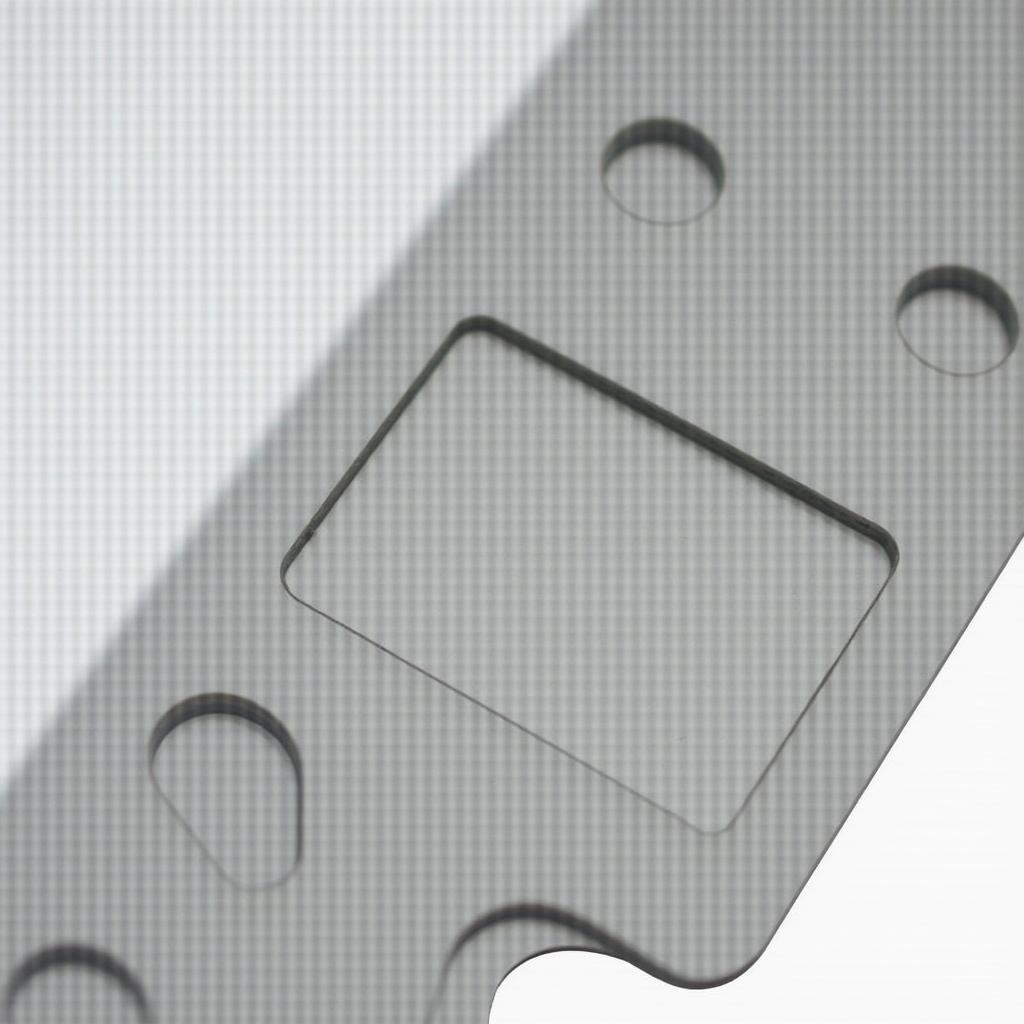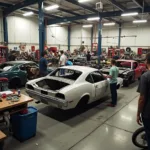Rust, that reddish-brown menace, is the bane of any car owner’s existence. It not only mars the appearance of your vehicle but can also compromise its structural integrity. When it comes to combating car body rust, repair panels are often your most effective weapon. This comprehensive guide will delve into the world of car body rust repair panels, equipping you with the knowledge to make informed decisions about your vehicle’s restoration.
Understanding Car Body Rust Repair Panels
Car body rust repair panels are pre-fabricated sections of metal specifically designed to replace rusted areas on your car’s body. They come in various shapes and sizes to match different vehicle makes, models, and the specific location of the rust damage. These panels offer a more streamlined and efficient alternative to labor-intensive metal fabrication.
Why Choose Repair Panels Over Patching?
While patching might seem like a quicker, more affordable fix, it’s often a temporary solution. Patching involves cleaning the rusted area and covering it with body filler. Over time, moisture can seep in, leading to further rusting underneath the patch.
Repair panels, on the other hand, offer a more permanent solution. They completely replace the rusted section, eliminating the source of the problem. If installed correctly and protected with rust-proofing treatments, repair panels can last for many years.
Types of Car Body Rust Repair Panels
Car body rust repair panels are typically made from steel or aluminum, each with its pros and cons:
- Steel panels are more common and generally less expensive. They offer good strength but are susceptible to future rust if not properly protected.
- Aluminum panels are more resistant to rust and lighter than steel, which can improve fuel efficiency. However, they are generally more expensive.
You can find repair panels for virtually every part of your car’s body that’s prone to rust, including:
- Fender panels
- Rocker panels
- Quarter panels
- Door skins
- Floor pans
- Cab corners
Finding the Right Car Body Rust Repair Panels
Locating the correct repair panels for your vehicle is crucial for a successful repair. Consider these factors:
- Vehicle Make, Model, and Year: Ensure the panel you choose is an exact match for your car to guarantee proper fitment.
- Panel Material: Decide between steel and aluminum based on your budget and desired longevity.
- Vendor Reputation: Purchase panels from reputable vendors known for quality and accuracy.
Car Body Rust Repair Panel Installation: A Job for the Pros?
While some experienced DIY enthusiasts might feel confident tackling the installation themselves, car body rust repair panel installation is generally best left to professionals. Here’s why:
- Welding Expertise: Proper installation involves welding the new panel into place, a skill best left to experienced professionals.
- Accurate Alignment: Precise alignment is crucial for the panel to fit seamlessly and function correctly. Professionals have the tools and expertise to ensure this.
- Rust Prevention: Professionals can apply appropriate rust-proofing treatments during installation to protect your investment and prevent future rust issues.
“When it comes to rust repair, think of it like surgery. You wouldn’t trust just anyone with a scalpel, would you? Choose experienced professionals to ensure the job is done right.” – John Miller, Master Automotive Technician
Cost of Car Body Rust Repair Panels
The cost of car body rust repair panels varies depending on several factors:
- Panel Size and Complexity: Larger, more complex panels will naturally cost more.
- Panel Material: Aluminum panels are generally more expensive than steel panels.
- Vehicle Make and Model: Panels for rare or luxury vehicles can be pricier.
- Vendor and Location: Prices can vary depending on the vendor and your geographic location.
Maintaining Your Car After Rust Repair
Once you’ve invested in car body rust repair panels, it’s vital to take steps to protect your investment and prevent future rust issues:
- Regular Washing: Regularly wash your car, especially during winter months, to remove road salt and other corrosive substances.
- Waxing: Apply a good quality wax a few times a year to create a protective barrier against moisture.
- Undercoating: Consider an undercoating treatment to provide an extra layer of protection to your car’s undercarriage.
Car body rust repair panels are a valuable tool in the fight against corrosion. By understanding the types of panels, the installation process, and the importance of professional expertise, you can make informed decisions to restore your vehicle’s integrity and prolong its lifespan. Remember, addressing rust early and effectively is key to keeping your car looking and performing its best.
FAQs About Car Body Rust Repair Panels
1. Can I install car body rust repair panels myself?
While possible for experienced DIYers, it’s generally recommended to have professionals install car body rust repair panels due to the need for welding expertise and precise alignment.
2. How long do car body rust repair panels last?
With proper installation and rust prevention measures, car body rust repair panels can last for many years.
3. Are aluminum or steel repair panels better?
Aluminum panels offer better rust resistance and are lighter, but they are more expensive. Steel panels are more common and affordable but require careful rust prevention.
4. How do I find the right repair panel for my car?
Ensure you have your car’s exact make, model, and year when searching for repair panels to guarantee proper fitment.
5. What can I do to prevent future rust after repair?
Regular washing, waxing, and undercoating treatments can help prevent future rust issues.
Do you need help with car body rust repair in these areas?
Explore other car body repair solutions:
Need more assistance?
Contact our 24/7 support team via WhatsApp: +1(641)206-8880, Email: [email protected]. We’re here to help!



